The Scoliosis Surgery Cost in Thailand approximately starts from THB 427800 (USD 12000)
Scoliosis is a condition which leads to an exceptional blend of the spine or the backbone. When seeing a spine from the side then it appears to be slightly bent and from the front, it appears to be completely straight. If there is a scoliosis development then there is a tendency for curves to form on either side of the body. Apart from this, spinal bones curl around on one another forming an S or a C shape. This form of curvature can be noticed in any age group. It is most common among girls than among boys. It is most likely to form among children who are above 10 years of age. People who have scoliosis are likely to pass it over to their children as well. There are four types of scoliosis which include functional, neuromuscular, degenerative, and idiopathic.
Medical professionals and doctors are trained extensively and after that, they receive a medical license in order to start practising as a doctor. The hospitals in Thailand are well-equipped and fully-furnished. With the help of modern equipment, the surgeries are performed so that the patient is on the safe side. The cost of scoliosis surgery in Thailand is much more affordable when compared to the western countries. Thailand has become the ultimate medical tourism destination.
The cost of scoliosis surgery depends on a number of factors like the age of the patient, medical history, type of doctor opted for, etc. Moreover, hospitals keep on introducing affordable rates from time to time for the benefit of the customers. One-time surgery will cost between $11000 and $25000 in the USA while the same surgery will cost a patient somewhere around $7000 and $15500 in Thailand.
Treatment cost
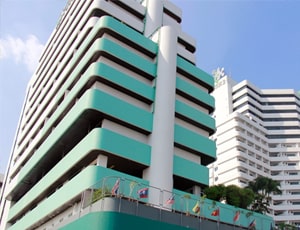
Types of Scoliosis Surgery in Phyathai 2 International Hospital and its associated cost
| Treatment Option | Approximate Cost Range (USD) | Approximate Cost Range (THB) |
|---|---|---|
| Scoliosis Surgery (Overall) | 13653 - 22732 | 487111 - 798376 |
| Spinal Fusion Surgery | 6363 - 12663 | 229341 - 458124 |
| Growing Rods Surgery | 7793 - 17694 | 271489 - 642284 |
| Vertebral Body Tethering (VBT) | 9236 - 17870 | 330574 - 638923 |
| Thoracoscopic Surgery | 7699 - 15381 | 275048 - 550494 |
| Minimally Invasive Surgery | 7911 - 13100 | 277554 - 468767 |
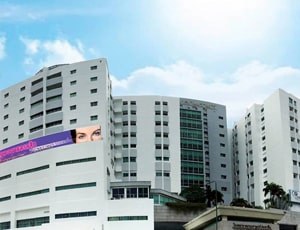
Types of Scoliosis Surgery in Kasemrad Ramkhamhaeng Hospital and its associated cost
| Treatment Option | Approximate Cost Range (USD) | Approximate Cost Range (THB) |
|---|---|---|
| Scoliosis Surgery (Overall) | 13371 - 22827 | 490135 - 784781 |
| Spinal Fusion Surgery | 6575 - 12671 | 227027 - 458018 |
| Growing Rods Surgery | 7808 - 17443 | 277213 - 623556 |
| Vertebral Body Tethering (VBT) | 9292 - 17823 | 321462 - 628978 |
| Thoracoscopic Surgery | 7704 - 15518 | 274617 - 553599 |
| Minimally Invasive Surgery | 7737 - 12942 | 282103 - 454568 |
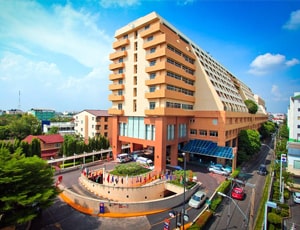
Types of Scoliosis Surgery in Vejthani Hospital and its associated cost
| Treatment Option | Approximate Cost Range (USD) | Approximate Cost Range (THB) |
|---|---|---|
| Scoliosis Surgery (Overall) | 13373 - 22411 | 470890 - 787962 |
| Spinal Fusion Surgery | 6502 - 13223 | 226633 - 466023 |
| Growing Rods Surgery | 7678 - 17617 | 274224 - 643583 |
| Vertebral Body Tethering (VBT) | 8974 - 18135 | 331609 - 627212 |
| Thoracoscopic Surgery | 7745 - 15789 | 279745 - 556915 |
| Minimally Invasive Surgery | 7894 - 12927 | 275771 - 453304 |

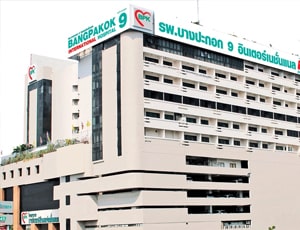
Types of Scoliosis Surgery in Bangpakok 9 International Hospital and its associated cost
| Treatment Option | Approximate Cost Range (USD) | Approximate Cost Range (THB) |
|---|---|---|
| Scoliosis Surgery (Overall) | 13391 - 22067 | 470874 - 811182 |
| Spinal Fusion Surgery | 6428 - 12855 | 225671 - 453439 |
| Growing Rods Surgery | 7729 - 17889 | 276998 - 642688 |
| Vertebral Body Tethering (VBT) | 9276 - 17643 | 323158 - 642886 |
| Thoracoscopic Surgery | 7710 - 15329 | 276131 - 541707 |
| Minimally Invasive Surgery | 7660 - 12885 | 281611 - 468936 |
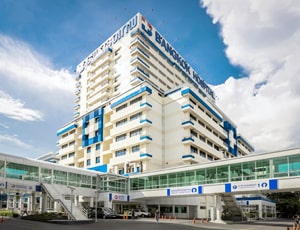
Types of Scoliosis Surgery in Bangkok Hospital and its associated cost
| Treatment Option | Approximate Cost Range (USD) | Approximate Cost Range (THB) |
|---|---|---|
| Scoliosis Surgery (Overall) | 13656 - 22949 | 486785 - 801572 |
| Spinal Fusion Surgery | 6345 - 12650 | 232536 - 451141 |
| Growing Rods Surgery | 7807 - 17491 | 279902 - 625216 |
| Vertebral Body Tethering (VBT) | 9189 - 17700 | 324849 - 637732 |
| Thoracoscopic Surgery | 7741 - 15492 | 282690 - 564314 |
| Minimally Invasive Surgery | 7623 - 12831 | 272093 - 465346 |
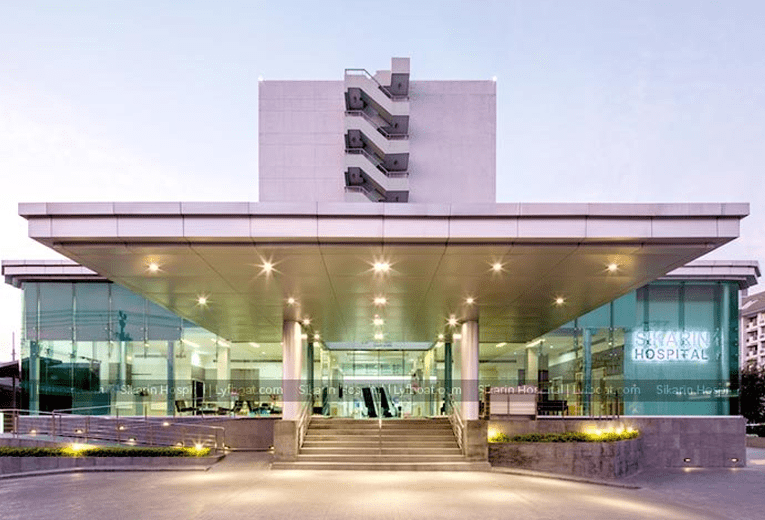
Types of Scoliosis Surgery in Sikarin Hospital and its associated cost
| Treatment Option | Approximate Cost Range (USD) | Approximate Cost Range (THB) |
|---|---|---|
| Scoliosis Surgery (Overall) | 13440 - 22347 | 484301 - 784814 |
| Spinal Fusion Surgery | 6465 - 13113 | 229863 - 451346 |
| Growing Rods Surgery | 7599 - 17845 | 278503 - 647391 |
| Vertebral Body Tethering (VBT) | 9245 - 18105 | 329953 - 630772 |
| Thoracoscopic Surgery | 7776 - 15648 | 274877 - 562639 |
| Minimally Invasive Surgery | 7812 - 12760 | 280476 - 467974 |
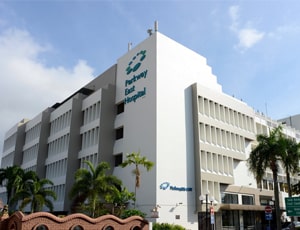
Parkway East Hospital located in Joo Chiat Pl, Singapore is accredited by JCI. Also listed below are some of the most prominent infrastructural details:
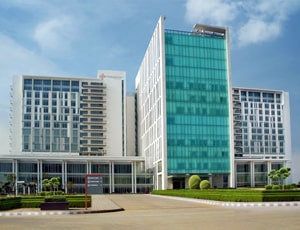
Types of Scoliosis Surgery in Medanta - The Medicity and its associated cost
| Treatment Option | Approximate Cost Range (USD) | Approximate Cost Range (INR) |
|---|---|---|
| Scoliosis Surgery (Overall) | 11367 - 16631 | 907936 - 1374608 |
| Spinal Fusion Surgery | 6769 - 11395 | 554051 - 912544 |
| Growing Rods Surgery | 8868 - 13741 | 723334 - 1107781 |
| Vertebral Body Tethering (VBT) | 11277 - 17244 | 927601 - 1410881 |
| Thoracoscopic Surgery | 6737 - 8960 | 559522 - 745522 |
| Minimally Invasive Surgery | 5742 - 7165 | 458820 - 602088 |
DOCTORS IN 14 SPECIALITIES
FACILITIES & AMENITIES
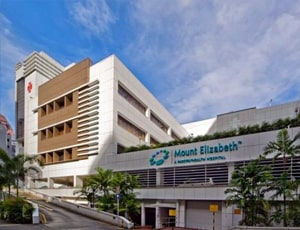
Mount Elizabeth Hospital located in Singapore, Singapore is accredited by JCI. Also listed below are some of the most prominent infrastructural details:
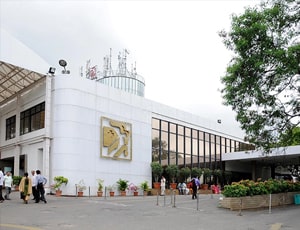
Types of Scoliosis Surgery in Apollo Hospitals and its associated cost
| Treatment Option | Approximate Cost Range (USD) | Approximate Cost Range (INR) |
|---|---|---|
| Scoliosis Surgery (Overall) | 11276 - 17019 | 936927 - 1396496 |
| Spinal Fusion Surgery | 6859 - 11157 | 549419 - 919069 |
| Growing Rods Surgery | 8950 - 13529 | 743591 - 1090473 |
| Vertebral Body Tethering (VBT) | 11452 - 16548 | 922782 - 1386149 |
| Thoracoscopic Surgery | 6750 - 8913 | 564277 - 735895 |
| Minimally Invasive Surgery | 5528 - 7184 | 467407 - 587194 |
DOCTORS IN 14 SPECIALITIES
FACILITIES & AMENITIES
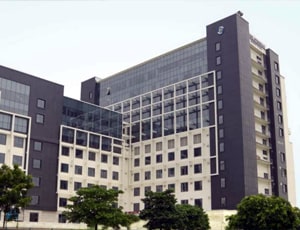
Types of Scoliosis Surgery in Venkateshwar Hospital and its associated cost
| Treatment Option | Approximate Cost Range (USD) | Approximate Cost Range (INR) |
|---|---|---|
| Scoliosis Surgery (Overall) | 10117 - 15230 | 831165 - 1250899 |
| Spinal Fusion Surgery | 6079 - 10125 | 498587 - 832751 |
| Growing Rods Surgery | 8144 - 12216 | 668130 - 1002254 |
| Vertebral Body Tethering (VBT) | 10109 - 15182 | 828498 - 1245717 |
| Thoracoscopic Surgery | 6119 - 8136 | 499185 - 667682 |
| Minimally Invasive Surgery | 5086 - 6591 | 416206 - 540616 |
DOCTORS IN 13 SPECIALITIES
FACILITIES & AMENITIES
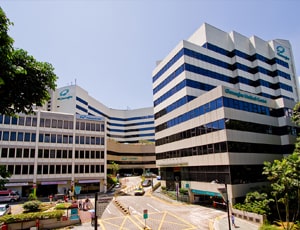
Gleneagles Hospital located in Napier Road, Singapore is accredited by JCI. Also listed below are some of the most prominent infrastructural details:
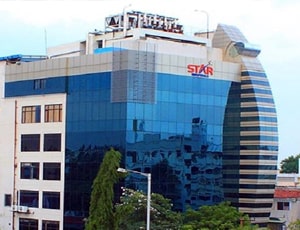
Types of Scoliosis Surgery in Star Hospitals and its associated cost
| Treatment Option | Approximate Cost Range (USD) | Approximate Cost Range (INR) |
|---|---|---|
| Scoliosis Surgery (Overall) | 9471 - 14090 | 771059 - 1155633 |
| Spinal Fusion Surgery | 5601 - 9265 | 466124 - 766003 |
| Growing Rods Surgery | 7457 - 11276 | 604838 - 931165 |
| Vertebral Body Tethering (VBT) | 9487 - 14002 | 766766 - 1139027 |
| Thoracoscopic Surgery | 5649 - 7447 | 465825 - 619959 |
| Minimally Invasive Surgery | 4726 - 6129 | 388544 - 496521 |
DOCTORS IN 12 SPECIALITIES
FACILITIES & AMENITIES
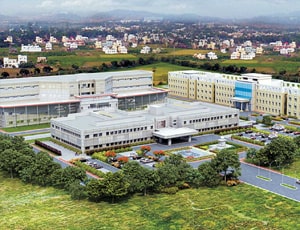
Types of Scoliosis Surgery in Global Health City and its associated cost
| Treatment Option | Approximate Cost Range (USD) | Approximate Cost Range (INR) |
|---|---|---|
| Scoliosis Surgery (Overall) | 11193 - 17012 | 910572 - 1390760 |
| Spinal Fusion Surgery | 6742 - 11391 | 564309 - 926124 |
| Growing Rods Surgery | 9009 - 13475 | 739030 - 1095406 |
| Vertebral Body Tethering (VBT) | 11062 - 16553 | 920086 - 1392546 |
| Thoracoscopic Surgery | 6730 - 9192 | 552431 - 742902 |
| Minimally Invasive Surgery | 5509 - 7260 | 458021 - 611698 |
DOCTORS IN 14 SPECIALITIES
FACILITIES & AMENITIES
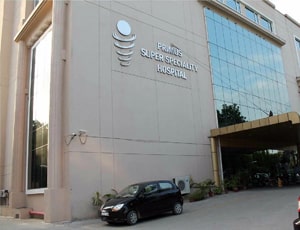
Types of Scoliosis Surgery in Primus Super Speciality Hospital and its associated cost
| Treatment Option | Approximate Cost Range (USD) | Approximate Cost Range (INR) |
|---|---|---|
| Scoliosis Surgery (Overall) | 10133 - 15251 | 830974 - 1246799 |
| Spinal Fusion Surgery | 6061 - 10192 | 500412 - 834825 |
| Growing Rods Surgery | 8128 - 12139 | 665877 - 997134 |
| Vertebral Body Tethering (VBT) | 10185 - 15221 | 836053 - 1249527 |
| Thoracoscopic Surgery | 6081 - 8111 | 500438 - 667671 |
| Minimally Invasive Surgery | 5052 - 6587 | 418110 - 541518 |
DOCTORS IN 13 SPECIALITIES
FACILITIES & AMENITIES
Scoliosis is a medical condition, characterized by an abnormal curve of the spine. There are different types of scoliosis, depending on the exact location of the abnormal curve and the age of the patient. The abnormal curvature of the spin is the most common symptom of scoliosis.
The spinal curve looks straight when looking from the front. The normal curved of the spine visualized from the sides are known as kyphosis and lordosis. People with scoliosis develop an additional curve in their spine to five it a C-shaped or an S-shaped appearance.
Scoliosis can affect adults as well as children. However, it is most common in patients aged above 10. Additionally, this condition is more common in girls than boys. A sideways curvature of the lumbar vertebrae is also known as lumbar scoliosis.
The most common test used to diagnosed scoliosis is Adam’s Forward Bend Test. During this test, the doctor asks the suspected patient to bend at the waist with palms touching the floor and knees straight. In this position, any abnormality in the curvature of the spine is clearly visible.
There are no specific symptoms of scoliosis. The appearance of the abnormal curvature of the spine is most often the first sign of scoliosis. The diagnosis of this condition most commonly takes place during an examination at school and college.
In severe cases of scoliosis, breathing difficulty, chest pain, and shortness of breath may appear. Scoliosis is not usually painful. But it can cause neck pain, back pain, abdominal pain, rib pain, and muscle spasms.
There are three approaches or types of scoliosis surgery. Out of these, spinal fusion is the most common procedure.
The patient is expected to move around in two or three days after the surgery. But total stay in the hospital can range from four to seven days. Children can resume going to school after two to four weeks of the surgery.
Physical activity has to be highly limited to keep the spine immobile allowing better fusion. Bending twisting, or lifting will be restricted for the first three months. Surgeons recommend wearing braces for a few months during the scoliosis surgery recovery.
Patients will be occasionally monitored with intermittent X rays even after one to two years until the bone fuses completely and becomes solid. Female patients can undergo normal delivery after undergoing the surgery.
Ask your healthcare adviser for the best multiple options and choose the one that meets your expectations
The cost of Scoliosis Surgery in Thailand starts from $12000. Scoliosis Surgery in Thailand is available across many hospitals in different states.
Different hospitals have different pricing policy when it comes to the cost of Scoliosis Surgery in Thailand. The cost quoted by some of the best hospitals for Scoliosis Surgery in Thailand generally covers the pre-surgery investigations of the patient. The Scoliosis Surgery cost in Thailand includes the cost of anesthesia, medicines, hospitalization and the surgeon's fee. There are many things that may increase the cost of Scoliosis Surgery in Thailand, including prolonged hospital stay and complications after the procedure.
There are many hospitals across the country that offer Scoliosis Surgery to international patients. The following are some of the most renowned hospitals for Scoliosis Surgery in Thailand:
Upon discharge from the hospital after Scoliosis Surgery in Thailand, the patients are advised to stay for about 28 days for recovery. This time frame is important to ensure that the surgery was successful and the patient is fit to fly back.
Apart from the cost of Scoliosis Surgery, the patient is also required to pay additionally for daily meals and guest house accommodation. The per day extra expenses in Thailand per person are about USD 50 per person.
Some of the cpopular cities in Thailand that offer Scoliosis Surgery include the following:
There are several doctors who are available for telemedicine consultation for patients requiring Scoliosis Surgery in Thailand. The following are some of the best doctors for Scoliosis Surgery in Thailand who are available for video consultation:
| Doctor | Cost | Schedule Your Appointment |
|---|---|---|
| Dr. Pratarn Nantaaree | USD 81 | Schedule Now |
After the Scoliosis Surgery takes place, the average duration of stay at the hospital is about 5 days. The doctors team review the patient's recovery during this time with the help of blood tests and imaging scans. Once they feel that everything is on track, the patient is discharged.
There are more than 5 hospitals that offer Scoliosis Surgery in Thailand. Such hospitals have the required infrastructure and a dedicated unit where patients can be treated. These hospitals comply with all the rules and regulations as dictated by the regulatory bodies and medical association in Thailand
Some of the best doctors for Scoliosis Surgery in Thailand are: